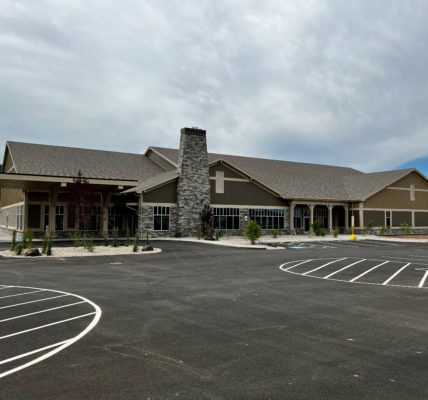By Carrie Haderlie
The Sheridan Press
Via- Wyoming News Exchange
SHERIDAN — To protect the honored “one person, one vote” rule, the number of people within each voting district in any given state should generally be the same as in any other.
That means that after every 10 year-census count, state governments take on the task of redistricting, or redrawing the maps that determine who will represent a given area.
In a virtual town hall meeting Thursday hosted by the Equality State Policy Center, State Rep. Dan Zwonitzer, R-Cheyenne, explained after a decennial census, the Wyoming Legislature selects a committee to run redistricting. Ten years ago, the task went to the Corporations, Elections and Political Subdivisions joint committee, which has taken on the same this year.
“That committee historically handles all elections issues, secretary of state issues and other local government issues,” Zwonitzer, committee chairman, said. “Our corporations committee is made up of all long-serving members both in the House and Senate. … It (is) geographically diverse, and politically diverse in Wyoming terms. We do have a Democrat and an Independent, on the House side, serving on the committee.”
In other states, some organizations call for an independent commission to carry out redistricting, Marguerite Herman with the Cheyenne League of Women Voters said.
“The reason being, they seem to have the independence from self-dealing, conflicts of interest, and you could trust them,” Herman said. “So can we trust a standing committee ethically, to be transparent? I think the answer is yes. They have the ethical standards.”
Zwonitzer said the state constitution gives the Legislature the power to redistrict, and he has faith in the process as it is set up in Wyoming.
Ben Williams with the National Conference of State Legislatures said Wyoming’s is the most common type of redistricting system, where the Legislature has a committee that drafts a bill, which is then voted on by both chambers and signed by the governor.
“That is the case in 35 states for legislative district lines,” Williams said. “Some of those states have an independent committee review, but in the end, the Legislature has the final say.”
When it comes to protecting the “one person, one vote” rule contained in the Equal Protection Clause of the 14th Amendment, and ensuring each district is substantially equal to any other, a 5% deviation in size is usually permissible.
“There are court cases that have challenged differently populated districts. Some states just didn’t redistrict at all every 10 years. It got to the point where cities had grown so much … so the courts defined what kinds of things are permissible for deviation, and keeping an average population in a district,” Rep. Mike Yin, D-Teton County, said Thursday. “That tends to look like around 5%, but there is no court case that says, ‘This is exclusively the deviation you are allowed before you violate one person, one vote.’”
During public comment Monday at a Corporations, Elections and Political Subdivisions joint committee meeting in Casper, Republican party chairpersons from both Sheridan and Carbon counties approached the committee, suggesting redistricting follow a proposed equation to allocate approximately one senator each per county.
“What we are planning to bring forward is a posture, not an entire plan, mostly an equation, that leans back toward the original constitutional language,” said Joey Correnti, Carbon County Republican Party chair. “I would like to speak to a county-wide focus. It is something we are going to stand hard on.”
The plan he presented begins with one senator per county as a baseline, not a mandate, he said. Bryan Miller, Sheridan County Republican Party chair, said the U.S. House and Senate treats states as individual entities, and so should the state treat its counties.
“We have mirrored our (state) government to be like that of the United States,” Miller said. “There is a simple way to resolve this, by arguing that we want our government to be formed the same way as the U.S. Constitution.”
Fremont County Sen. Cale Case said while he appreciated the argument, it was one he had heard before.
“It sounds good, but it has failed at every single level,” Case said.
In Wyoming, for example, Niobrara County has just more than 2,000 residents. Laramie County now has a record 100,000-plus people.
“If you have both of those counties, and the same number of senators, for both of those counties … I think that falls apart on its face. It is not practical, and it is not fair,” Case said.
The reason each state has two senators, he continued, is because it was written into the U.S. Constitution in 1787.
Wyoming’s state constitution, however, requires the state legislature redraw its districts based on the census.
According to a memo from the Wyoming Legislative Services Office presented to the committee Monday, the U.S. Supreme Court has found state legislative districts are required to be “substantially equal in population under the equal protection clause.”
The court has specifically considered “whether the senate of a state could be determined by county boundaries, similar to the allocation of two U.S. Senators to each state, despite substantial population deviations between the states.”
However, it found that unlike an entire state, “political subdivisions” of states like counties and cities, “never were and never have been considered as sovereign entities,’” the LSO memo read.
“The Court then went on to say that: ‘Since we find the so-called federal analogy inapposite to a consideration of the constitutional validity of state legislative apportionment schemes, we necessarily hold that the Equal Protection Clause requires both houses of a state legislature to be apportioned on a population basis’,” according to the LSO.
The Census Bureau uses an apportionment count to define congressional seats, which includes stationed military people living abroad. That number shows 577,719 people in Wyoming, up from 568,300 in 2010.
The State of Wyoming will use a slightly lower number — its official resident count of 576,851, — for local redistricting efforts.
According to preliminary numbers, each House District would have 9,614 residents and each Senate District would have 19,228 residents. That would mean an increase of 220 people per House seat, and 440 people per Senate seat.
The next committee meeting will begin at 8:30 a.m. Sept. 2-3 at Sheridan College, and the public is invited to participate in the process by using a portal hosted by Maptitude, where people can submit their own maps and recommendations for redistricting lines.
On Monday, the committee voted to allocate $40,000 to create the public portal.
Proposed redistricting legislation will have to be complete by a Dec. 1 deadline for review before the 2022 budget session.
“Some states have had eight or nine people submit plans,” Zwonitzer said. “Other states have had three- or 400 from the public. Those tend to be about congressional districts more than stat







